The Mythical Creatures of the Pegasus Constellation: A Cosmic Bestiary unveils a fascinating world of legendary beings that have captivated human imagination for centuries. Within the celestial expanse of the Pegasus constellation, ancient tales and fantastical creatures come to life, breathing new life into the mysteries of the universe. From the majestic Griffin, the mystical Hippocampus, to the enigmatic Chimera, this cosmic bestiary is a testament to the endless possibilities of human creativity and the transcendent power of mythical lore. Join us on a celestial journey as we explore the origins, peculiarities, and significance of the Pegasus constellation and the extraordinary creatures that inhabit its celestial realm. Discover the ancient Greek myths, delve into the artistic and literary representations of Pegasus, and unravel the symbolic meaning behind this ethereal constellation. Prepare to be enchanted by a cosmic tapestry of captivating myths and legends that continue to inspire and intrigue us to this day.
Contents
- The Pegasus Constellation
- A Cosmic Bestiary Unveiled
- Legends and Stories
- Significance of Pegasus Constellation
- Conclusion
-
Frequently Asked Questions
- 1. How did the Pegasus constellation get its name?
- 2. Can I see the Pegasus constellation with the naked eye?
- 3. Are there any other constellations associated with Pegasus?
- 4. Is Pegasus depicted differently in different cultures?
- 5. What is the significance of Pegasus in astrology?
- 6. Are there any notable stars within the Pegasus constellation?
- 7. Are there any deep-sky objects within the Pegasus constellation?
- 8. What is the mythological origin of the Griffin?
- 9. What role does the Hippocampus play in mythology?
- 10. How does the Chimera embody the concept of a hybrid beast?
- References
-
Frequently Asked Questions
- What is the Pegasus Constellation?
- How did the Pegasus Constellation get its name?
- Why is the Pegasus Constellation considered significant?
- What are the origins of the Pegasus myth?
- What are the peculiarities of the Pegasus Constellation?
- What is the Griffin, and how is it related to the Pegasus Constellation?
- What is a Hippocampus, and how does it relate to the Pegasus Constellation?
- What is a Chimera, and why is it associated with the Pegasus Constellation?
- What are some ancient Greek myths involving Pegasus?
- How has Pegasus been portrayed in art and literature throughout history?
- References
- Read More
The Pegasus Constellation
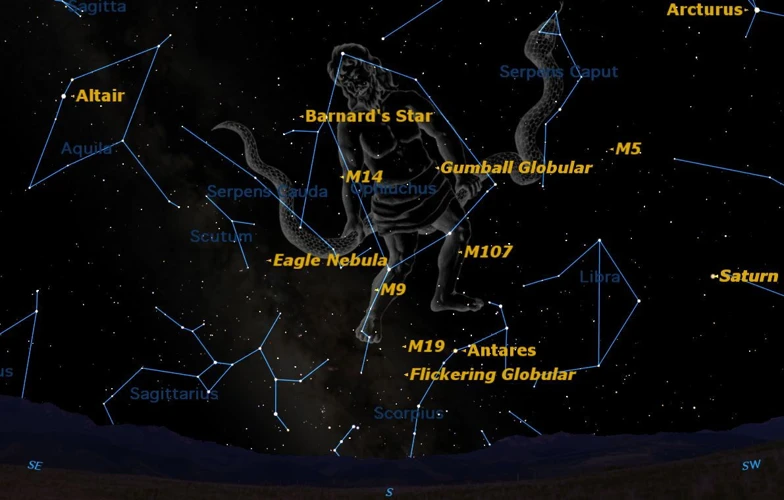
The Pegasus Constellation, marked by its distinctive winged horse shape, has intrigued stargazers and storytellers throughout history. This celestial marvel can be found in the northern sky, nestled between the constellations of Cygnus and Aquarius. With its alpha star, Markab, shining brightly, Pegasus takes center stage in the cosmic theater. The origins of this mythical creature can be traced back to ancient Greece, where it was believed to have sprung forth from the severed neck of the fearsome Gorgon, Medusa. Its close proximity to the celestial equator makes it easily visible to observers in both the northern and southern hemispheres. The Pegasus Constellation holds a special place in human consciousness, providing a canvas for countless legends, stories, and interpretations. Its majestic presence reminds us of the vastness and wonder of the universe, offering a cosmic gate through which we can explore the mysteries of the celestial realm. Indeed, the Pegasus Constellation serves as a celestial guide, beckoning us to embark on a journey of imagination and discovery.
1.1 The Origins of Pegasus
The Origins of Pegasus can be traced back to ancient Greek mythology, where it is believed to have emerged from the blood of the slain Gorgon, Medusa. According to the myth, the hero Perseus, on his quest to defeat the monstrous Medusa, successfully beheaded her using a reflective shield. As her blood spilled onto the ground, two creatures came into existence – Chrysaor, a golden-armored warrior, and Pegasus, the winged horse. Pegasus, with its majestic wings and graceful air, became an iconic symbol of courage and freedom. It quickly ascended to the realm of the divine, carrying heroes and gods alike on its back. Legends speak of how Pegasus aided the hero Bellerophon in his battle against the Chimera, a fearsome creature with the body of a lion, the head of a goat, and the tail of a serpent. Pegasus became a trusted companion, granting Bellerophon the ability to fly and ultimately triumph over his formidable adversary.
The symbolism and significance of Pegasus extend beyond its mythological origins. Its association with heroes and mythical creatures has made it a powerful symbol of inspiration, transformation, and transcendence throughout history. Pegasus is often depicted as a celestial creature, connecting the earthly realm with the heavens above. In this sense, it represents the human desire to reach for the stars and achieve greatness. Its wings symbolize the power of imagination and the ability to soar above limitations. Pegasus continues to capture the human imagination, inspiring countless works of art, literature, and even astrology. Its presence in the night sky, embodied by the Pegasus Constellation, serves as a reminder of the enduring power of myth and the beauty that lies within the vast cosmos.

1.2 The Peculiarities of the Pegasus Constellation
The Pegasus Constellation holds a multitude of peculiarities that make it a unique and intriguing cosmic formation. One of its notable characteristics is its position in the night sky. Pegasus is located near the celestial equator, allowing it to be visible from various parts of the world. Its prominence in both the northern and southern hemispheres ensures that it can be admired by people from diverse cultures and backgrounds. Another intriguing aspect of the Pegasus Constellation is its association with several other significant constellations. It shares borders with Aquarius, Andromeda, Cygnus, and Delphinus, creating a celestial neighborhood that is rich with mythological stories and astronomical connections. The close proximity of Pegasus to these constellations invites us to explore the interconnectedness of various cosmic narratives and appreciate the intricate tapestry of the night sky. Pegasus contains several notable stars, such as Markab, Algenib, and Scheat. These stars not only contribute to the distinctive shape of the constellation but also add luster and brilliance to its celestial presence. The Pegasus Constellation’s peculiarities not only captivate astronomers and stargazers but also provide a sense of wonder and inspiration for those who seek to understand the mysteries of the universe. Through its unique position, cosmic relationships, and radiant stars, Pegasus invites us to embark on a journey of exploration and contemplation, where we can unravel the secrets of the cosmos and expand our understanding of the celestial wonders that surround us. [Internal link: Mapping constellations to their zodiacal positions](/the-zodiac-wheel-mapping-constellations-zodiacal-positions/)
A Cosmic Bestiary Unveiled
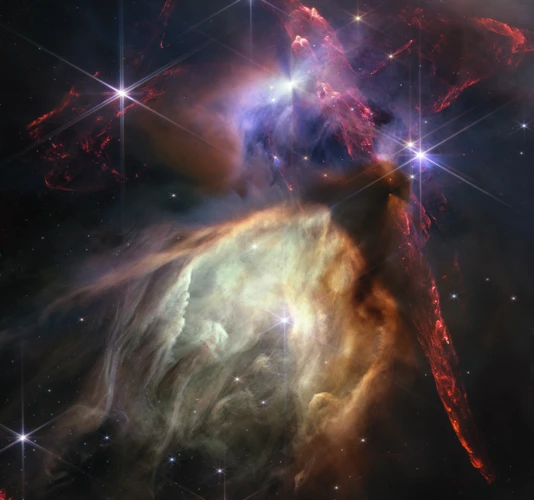
Within the vastness of the Pegasus Constellation lies a cosmic bestiary, an enchanting collection of mythical creatures that ignite the imagination and ignite the spark of wonder. This celestial menagerie unveils extraordinary beings that have transcended time and culture, captivating our hearts and minds. Among the stars, we encounter the majestic Griffin, a magnificent creature with the body of a lion and the wings of an eagle, a symbol of courage and guardianship. Dive deeper into the cosmic depths, and you will encounter the Hippocampus, a mystical equine sea creature believed to bring harmony and balance to the depths of the ocean. And if you dare venture even further, you may cross paths with the Chimera, a fearsome hybrid beast of fire-breathing lion, serpent, and goat, representing the embodiment of chaos and transformation. Each creature in this cosmic bestiary possesses its unique symbolism and significance, reflecting the rich tapestry of human imagination. As we unravel the mysteries of the Pegasus Constellation’s bestiary, we tap into the collective unconscious, exploring the depths of our own inner realms and pondering the boundless wonders of the universe. Prepare to be captivated and inspired by this cosmic menagerie whose stories continue to permeate our cultural consciousness, linking us to ancient tales and universal archetypes.
2.1 The Griffin: The Majestic Guardian of the Skies
In the realm of the Pegasus Constellation, one creature stands out as the majestic guardian of the skies – the Griffin. This mythical beast, often depicted with the head and wings of an eagle and the body of a lion, possesses a commanding presence that captures the imagination. The origins of the Griffin can be traced back to ancient mythology, where it was believed to be a symbol of divine power and protection. With its eagle-like vision, the Griffin soars through the heavens, keeping a watchful eye over the celestial realm. Legends speak of its ability to detect unseen dangers and protect celestial treasures. It is said that the Griffin’s majestic wings span across the vast expanse of the Pegasus Constellation, serving as a celestial bridge between the mortal and immortal realms. This enigmatic creature has fascinated cultures across time and has been featured in various mythologies and folklore around the world. Its presence in African mythology, for example, highlights its prominence as a symbol of bravery and strength, often associated with heroic figures in tales of triumph and conquest. As we gaze upon the night sky, the Griffin reminds us of the mystery and wonder that lies beyond our reach, inviting us to explore the depths of our imagination and embrace the power of mythical beings that inhabit the cosmic tapestry. Through its symbolism and awe-inspiring presence, the Griffin emerges as a testament to the enduring fascination we have with creatures that embody the fierce and noble qualities of both the eagle and the lion. In this celestial menagerie, the Griffin reigns supreme as the majestic guardian of the skies.
2.2 The Hippocampus: A Mystical Equine Sea Creature
The Hippocampus, a mythical equine sea creature, is a fascinating creature that resides within the realm of the Pegasus constellation. With the upper body of a horse and the lower body of a fish, it embodies the merging of land and sea. In Greek mythology, the Hippocampus is often depicted as a gentle and noble being, known for its strength, grace, and mystical qualities. Legends tell of its ability to traverse both land and water effortlessly, symbolizing the duality and interconnectedness of life. This mythical creature has captured the imaginations of many cultures, inspiring awe and wonder. In some mythologies, the Hippocampus is believed to be a guardian of treasures beneath the sea, while in others, it is seen as a harbinger of storms and rough waters. Artists and poets have been captivated by the beauty of the Hippocampus, with its flowing mane and shimmering scales, often portraying it in vibrant artwork and literature. The Hippocampus represents the marriage between the power of the horse and the fluidity of the ocean, embodying the harmony and balance found within nature. Its presence within the Pegasus constellation adds another layer of intrigue and mystery to this cosmic bestiary, showcasing the endless diversity of mythical creatures that span across the cosmos.
2.3 The Chimera: A Mythical Hybrid Beast
The Chimera, a mythical hybrid beast, is a captivating creature that holds a prominent place in the bestiary of the Pegasus Constellation. This fearsome creature is often depicted as a combination of different animals, typically including the head and body of a lion, the head of a goat emerging from its back, and a serpent as its tail. With its striking appearance and powerful symbolism, the Chimera has captured the imaginations of storytellers, artists, and scholars for centuries. In Greek mythology, the Chimera was believed to be the offspring of Typhon and Echidna, two monstrous beings from the underworld. Renowned for its ferocity and supernatural abilities, the Chimera was a formidable adversary, capable of breathing fire and wreaking havoc upon unsuspecting victims. It inhabited the region of Lycia in Anatolia, terrorizing the local population until it was ultimately defeated by the hero Bellerophon, with the help of the winged horse Pegasus. The Chimera’s presence in the Pegasus Constellation serves as a reminder of the ancient tales that continue to shape our understanding of the cosmos. Its mythical allure and enduring significance make it a fascinating subject of exploration, inviting us to delve deeper into the realms of mythology and ancient folklore. Discovering the tales of heroic figures in African mythology or shedding light on the mystical meanings of planetary alignments can offer valuable insights into the broader context in which the Chimera exists. Through these interconnected threads, we gain a richer understanding of the intricate tapestry of mythical creatures that inhabit the vast expanse of the Pegasus Constellation.
Legends and Stories
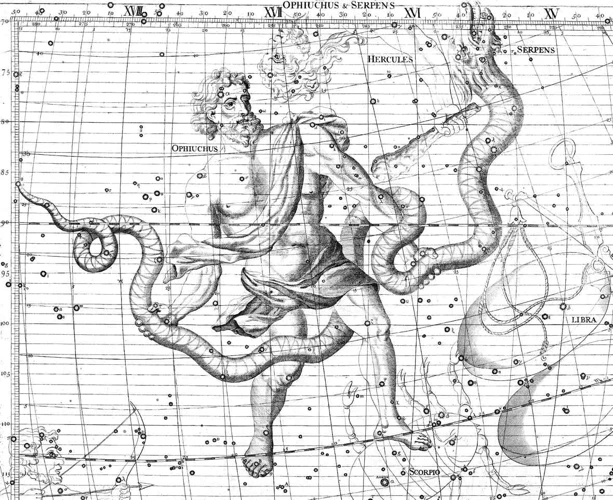
Legends and stories surrounding the Pegasus Constellation have traversed time, captivating the imagination of cultures across the globe. In ancient Greek mythology, Pegasus emerged as a key figure, best known for being the faithful companion of heroes like Bellerophon. According to the myth, Pegasus was instrumental in aiding Bellerophon in his battles against mythical beasts, including the fearsome Chimera. The exploits of Pegasus and Bellerophon became the subject of numerous artistic and literary works, immortalizing their courageous adventures. From ancient Greece to the modern world, Pegasus continues to inspire artists, writers, and dreamers, serving as a symbol of freedom, grace, and untamed spirit. These stories demonstrate the enduring power of myth to reflect and shape cultural beliefs, while reminding us of the timeless human longing for heroes and mythical creatures. Explore the vast tapestry of Pegasus legends and let yourself be carried away by the enchantment of these ancient tales.
3.1 Ancient Greek Pegasus Myths
Ancient Greek mythology is rich with captivating tales of Pegasus, the winged horse. One of the most famous stories surrounding this mythical creature is its birth from the blood of Medusa, a Gorgon with snakes for hair. According to legend, the hero Perseus decapitated Medusa, causing her blood to mix with the sea and give rise to Pegasus and his brother, the warrior Chrysaor. Pegasus, with his pure white coat and magnificent wings, became a symbol of power, grace, and inspiration. In Greek mythology, it is said that Pegasus became the loyal companion to the hero Bellerophon. The two embarked on numerous adventures, the most notable being the slaying of the fearsome Chimera, a ferocious creature with the body of a lion, the head of a goat, and the tail of a serpent. It was believed that Pegasus, with his ability to soar through the skies, gave Bellerophon the advantage he needed to defeat the Chimera. Pegasus also played a significant role in the story of the hero Perseus, aiding him in his quest to rescue the princess Andromeda from a sea monster. These ancient Greek myths highlight the extraordinary abilities and exceptional qualities attributed to Pegasus, making him one of the most revered figures in Greek mythology. As the embodiment of freedom and untamed spirit, Pegasus continues to inspire artists, writers, and dreamers across the ages. To delve deeper into the world of mythical creatures, you can explore the symbolic meanings of planetary alignments and their influence on ancient cultures, shedding light on the mystical significance of celestial events.
3.2 Pegasus in Art and Literature
In the realm of art and literature, Pegasus has left an indelible mark, inspiring countless creations and captivating the imaginations of artists and writers across cultures and centuries. From ancient Greek pottery to Renaissance paintings, Pegasus has been a popular subject, often depicted as a magnificent winged horse soaring through the skies. In Greek mythology, Pegasus was a symbol of poetic inspiration and divine connection, and this symbolism has influenced numerous literary works. Perhaps one of the most famous references to Pegasus is in the epic poem “The Iliad” by Homer, where the horse is described as the loyal companion of the hero Bellerophon. Throughout art history, Pegasus has also been depicted in sculptures and mosaics, perpetuating its iconic status. In modern times, Pegasus continues to captivate artists and writers, serving as a symbol of freedom, grace, and imagination. It is not uncommon to see Pegasus depicted in contemporary fantasy literature, as a character embodying mystical powers and a sense of otherworldliness. This enduring presence of “the winged horse” in art and literature highlights the enduring appeal and fascination that Pegasus holds in the human psyche.
Anchor: To explore more mythical creatures and their role in different cultures, read our article about heroic figures in African mythology.
Significance of Pegasus Constellation
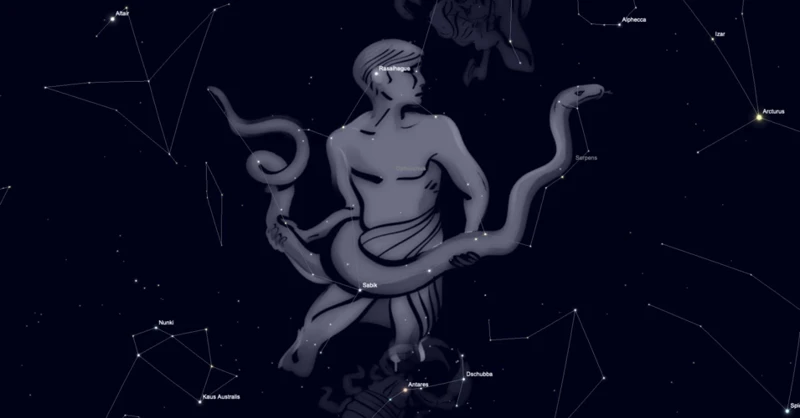
The significance of the Pegasus Constellation extends beyond its captivating mythology and celestial beauty. Throughout history, this cosmic symbol has held various meanings and interpretations across different cultures and belief systems. In astrology, the Pegasus Constellation is associated with attributes of courage, freedom, and transcending limitations. It is believed to bestow individuals with the ability to soar above challenges and achieve their dreams. Some astrologers view the Pegasus as a representation of spiritual awakening and higher consciousness. Its presence in the night sky serves as a reminder to embrace our inner strength and harness our true potential. The Pegasus Constellation plays a significant role in celestial navigation. Sailors and early explorers used the stars in Pegasus to guide their journeys, relying on its presence to navigate unknown territories. Today, the Pegasus Constellation continues to inspire astronomers and stargazers alike, offering a sense of wonder and a connection to the vastness of the universe. Its position in relation to other constellations has been the subject of scientific study, shedding light on the cosmic dance of celestial bodies and their intricate connections. Exploring the significance of the Pegasus Constellation not only deepens our understanding of the cosmos but also invites us to contemplate our place within the grand tapestry of existence. It serves as a reminder that the universe is filled with beauty, mystery, and endless possibilities waiting to be explored.
Conclusion
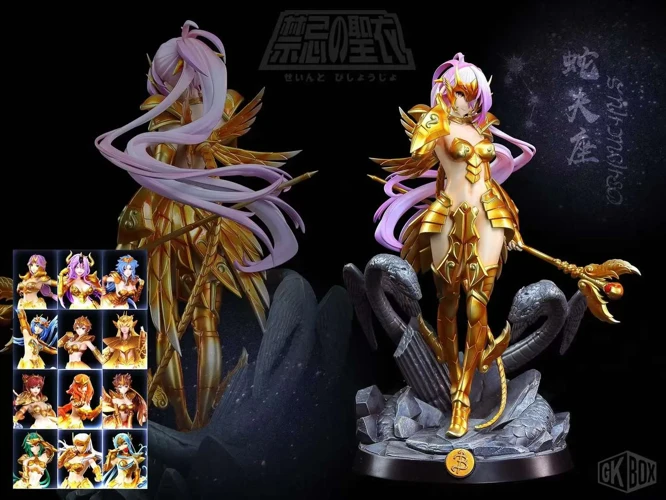
In conclusion, the Pegasus constellation with its mythical creatures has left an indelible mark on human culture and imagination. From ancient Greek myths to modern art and literature, Pegasus continues to inspire and captivate. The celestial bestiary within the Pegasus constellation, including the majestic Griffin, the mystical Hippocampus, and the enigmatic Chimera, represents the boundless creativity of human storytelling. These creatures tap into our innate desire for wonder and enchantment, reminding us of the vastness and mystery of the cosmos. The Pegasus constellation holds a special significance, not only as a celestial marvel but also as a symbol of our collective human imagination. As we gaze upon the stars and constellations, we are reminded of the connections between myth and reality, bridging the gap between the earthly realm and the cosmic expanse. The exploration of the Pegasus constellation and its cosmic bestiary invites us to delve deeper into the realms of mythology, symbolism, and the hidden meanings hidden within the night sky. It is a reminder that there is much more to be discovered and understood about the universe and our place within it. So, let us continue to gaze at the stars, seek out the stories and symbols they hold, and embrace the magic and wonder they inspire. For in the cosmic dance of constellations and mythical creatures, we find a reflection of our own dreams, aspirations, and the eternal human fascination with the unknown.
Frequently Asked Questions

1. How did the Pegasus constellation get its name?
The Pegasus constellation is named after the legendary winged horse from Greek mythology, known for its grace and beauty. The word “Pegasus” is derived from the ancient Greek term meaning “springing” or “gushing”, symbolizing the horse’s ability to create a water spring by striking its hoof against the ground.
2. Can I see the Pegasus constellation with the naked eye?
Yes, the Pegasus constellation is easily visible to the naked eye, especially in areas with minimal light pollution. In the northern hemisphere, it can be seen during autumn and early winter. Look for a group of stars forming a distinct square shape, which represents the body of Pegasus.
3. Are there any other constellations associated with Pegasus?
Yes, there are several constellations associated with Pegasus. These include Andromeda, Cetus, and Perseus. In Greek mythology, Andromeda was saved by the hero Perseus while tied to a rock as an offering to a sea monster sent by Poseidon. The story of Perseus and Andromeda is intricately connected to the myth of Pegasus.
4. Is Pegasus depicted differently in different cultures?
While Pegasus is primarily associated with Greek mythology, variations of the creature can be found in other cultures as well. In Hindu mythology, for example, there is a similar celestial horse known as Uchchaihshravas, considered the divine vehicle of Lord Indra, the king of gods.
5. What is the significance of Pegasus in astrology?
In astrology, the Pegasus constellation is not part of the traditional zodiac. However, its presence in the night sky adds a touch of celestial enchantment and mystical energy to astrological interpretations. Some astrologers may associate Pegasus with themes of freedom, inspiration, and spiritual journeys.
6. Are there any notable stars within the Pegasus constellation?
One of the most notable stars in the Pegasus constellation is Alpheratz, which serves a dual role as it also marks the head of the neighboring constellation Andromeda. Another significant star is Scheat, which is known for its variable luminosity and distinctive red hue.
7. Are there any deep-sky objects within the Pegasus constellation?
Yes, the Pegasus constellation is home to several notable deep-sky objects. The Andromeda Galaxy, also known as Messier 31, is located within the boundaries of Pegasus and is the closest spiral galaxy to the Milky Way. The Great Square of Pegasus also contains the spiral galaxy Messier 74, which can be observed with a telescope.
8. What is the mythological origin of the Griffin?
The Griffin, one of the mythical creatures associated with the Pegasus constellation, is believed to have originated in ancient Persian mythology. It is depicted as a creature with the body of a lion and the head and wings of an eagle, symbolizing the union of terrestrial and celestial realms.
9. What role does the Hippocampus play in mythology?
In Greek mythology, the Hippocampus is often depicted as a creature with the upper body of a horse and the lower body of a fish or sea serpent. It was believed to be the mystical creature that pulled Poseidon’s chariot through the depths of the sea, representing the power and beauty of the oceans.
10. How does the Chimera embody the concept of a hybrid beast?
The Chimera, a legendary creature associated with the Pegasus constellation, is a prime example of a hybrid beast. It is often represented as a combination of a lion, a goat, and a serpent, representing the fusion of diverse animal forms into a single fearsome entity. This mythical creature symbolizes the concept of unpredictability and fantastical combinations in ancient mythology.
References
- Pegasus Constellation – Features And Facts – The Planets
- Pegasus Constellation: Facts & Notable Features
Frequently Asked Questions

What is the Pegasus Constellation?
The Pegasus constellation is a collection of stars that form the shape of the mythical winged horse, Pegasus.
How did the Pegasus Constellation get its name?
The Pegasus constellation was named after the mythical creature Pegasus, which was said to be a winged horse in Greek mythology.
Why is the Pegasus Constellation considered significant?
The Pegasus constellation is considered significant because it has been a prominent feature in mythology, art, and literature for centuries, capturing the human imagination and inspiring countless stories and works of art.
What are the origins of the Pegasus myth?
The origins of the Pegasus myth can be traced back to ancient Greece, where it was believed that Pegasus was born from the blood of the decapitated Gorgon Medusa and was ridden by the hero Bellerophon.
What are the peculiarities of the Pegasus Constellation?
One peculiar feature of the Pegasus constellation is its location in the northern sky. It is also known for its distinctive shape, resembling a flying horse with outstretched wings.
The Griffin is a mythical creature with the body of a lion and the head and wings of an eagle. It is often associated with the Pegasus constellation as a majestic guardian of the skies.
What is a Hippocampus, and how does it relate to the Pegasus Constellation?
A Hippocampus is a mystical sea creature with the upper body of a horse and the lower body of a fish or a mermaid. It is often connected to the Pegasus constellation due to its equine nature.
What is a Chimera, and why is it associated with the Pegasus Constellation?
A Chimera is a mythical hybrid beast with the body of a lion, the head of a goat, and the tail of a serpent. It is closely linked to the Pegasus constellation as a symbol of mythical creatures.
What are some ancient Greek myths involving Pegasus?
One popular ancient Greek myth involving Pegasus is the story of Bellerophon, who tamed and rode Pegasus to defeat the monstrous Chimera. Another myth tells of Pegasus helping Perseus in his quest to slay Medusa.
How has Pegasus been portrayed in art and literature throughout history?
Pegasus has been depicted in various art forms, such as paintings, sculptures, and literature. It has been portrayed as a symbol of freedom, inspiration, and the power of imagination.
References
- Pegasus | Mythical bestiary Wikia – Fandom
- Pegasus Constellation: Facts & Notable Features
- Photo Album :: Constellation Pegasus







